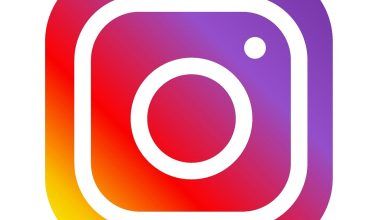If you’ve created a song and you’re ready to share it with the world, putting it on iTunes is one of the best ways to reach listeners. With millions of users browsing iTunes daily, your music can find its audience and start earning revenue. Here’s how to get started with getting your song on iTunes.
Step 1: Prepare Your Music
Before uploading your song to iTunes, ensure it’s ready for a professional release. This step is crucial because first impressions matter, especially in the music industry.
- Make sure your song is high-quality: Use professional recording equipment or hire a recording studio to get the best sound quality.
- Mix and master your track: Mixing and mastering give your song a polished, professional feel. This step ensures that your music sounds great on any device.
- Save your song in the right format: iTunes typically accepts WAV files. Make sure your file meets their specifications to avoid delays.
Once your song is ready, it’s time to gather the necessary information for uploading.
Step 2: Gather Metadata
Metadata is essential for organizing your music and ensuring it reaches the right audience. Here’s what you’ll need:
- Song title: Double-check for spelling and formatting errors.
- Artist name: Decide if you want to release your song under your real name, a stage name, or a band name.
- Genre: Choose a genre that best fits your music. This helps listeners find your song when browsing iTunes.
- Album art: Create eye-catching artwork that represents your song’s mood and theme. iTunes has specific guidelines for artwork, so ensure it meets their requirements.
Step 3: Choose a Digital Distribution Service
Unfortunately, you can’t upload your music to iTunes directly. Instead, you’ll need to use a digital distribution service. These services act as middlemen, delivering your music to platforms like iTunes, Spotify, and Amazon Music.
Some popular distribution services include:
- TuneCore: Known for its user-friendly interface and wide reach.
- DistroKid: Affordable and ideal for independent artists.
- CD Baby: Offers additional services like sync licensing.
- Amuse: Free to use, though it has fewer features compared to paid services.
Compare these options to find one that suits your budget and needs.
Step 4: Create an Account with Your Chosen Distributor
Once you’ve picked a distribution service, sign up and create an account. During this process, you’ll be asked for basic information like your name, email, and payment details. Most platforms also require you to verify your identity to ensure you’re the rightful owner of the music.
Step 5: Upload Your Song
Now comes the exciting part – uploading your song! Here’s how to do it:
- Log in to your distributor’s dashboard.
- Click on the “Upload” or “Release” button.
- Fill in the required details: Enter your metadata, including the song title, artist name, and genre.
- Upload your song file: Make sure it meets the platform’s format requirements.
- Add your album art: Double-check that it meets iTunes’ guidelines.
- Choose a release date: Decide if you want your song to be available immediately or on a specific date.
Step 6: Set Your Pricing
iTunes allows you to set the price for your song. Most songs are priced at $0.99 or $1.29. Consider what’s fair and competitive for your audience.
Step 7: Submit for Review
After filling in all the details, your distributor will review your submission. They’ll check for:
- Copyright violations
- Metadata errors
- File format issues
If everything looks good, your song will be sent to iTunes for final approval.
Step 8: Promote Your Song
Congratulations – your song is now on iTunes! But don’t stop there. To reach more listeners, you’ll need to promote your music. Here are some tips:
- Share on social media: Post links to your song on platforms like Instagram, Twitter, and Facebook.
- Reach out to influencers: Ask bloggers, YouTubers, or podcasters to feature your song.
- Run ads: Consider using platforms like Facebook Ads or Google Ads to target specific audiences.
- Perform live: Promote your song during gigs or virtual performances.
Step 9: Track Your Performance
Most distribution services provide analytics tools to help you track your song’s performance. Pay attention to metrics like:
- Number of downloads
- Revenue earned
- Listener demographics
Use this data to understand your audience and refine your future releases.
Conclusion
Putting your song on iTunes might seem complicated at first, but it’s a straightforward process when broken down into steps. By preparing your music, choosing the right distributor, and actively promoting your release, you can successfully share your work with the world. Start your journey today, and let iTunes help you connect with music lovers everywhere.
For further reading, explore these related articles:
- Circles Post Malone Lyrics – A Song About Love, Loss, and Life
- Billie Eilish’s Big Moment at the Oscars 2022: A Night to Remember
For additional resources on music marketing and distribution, visit DMT Records Pvt. Ltd..






